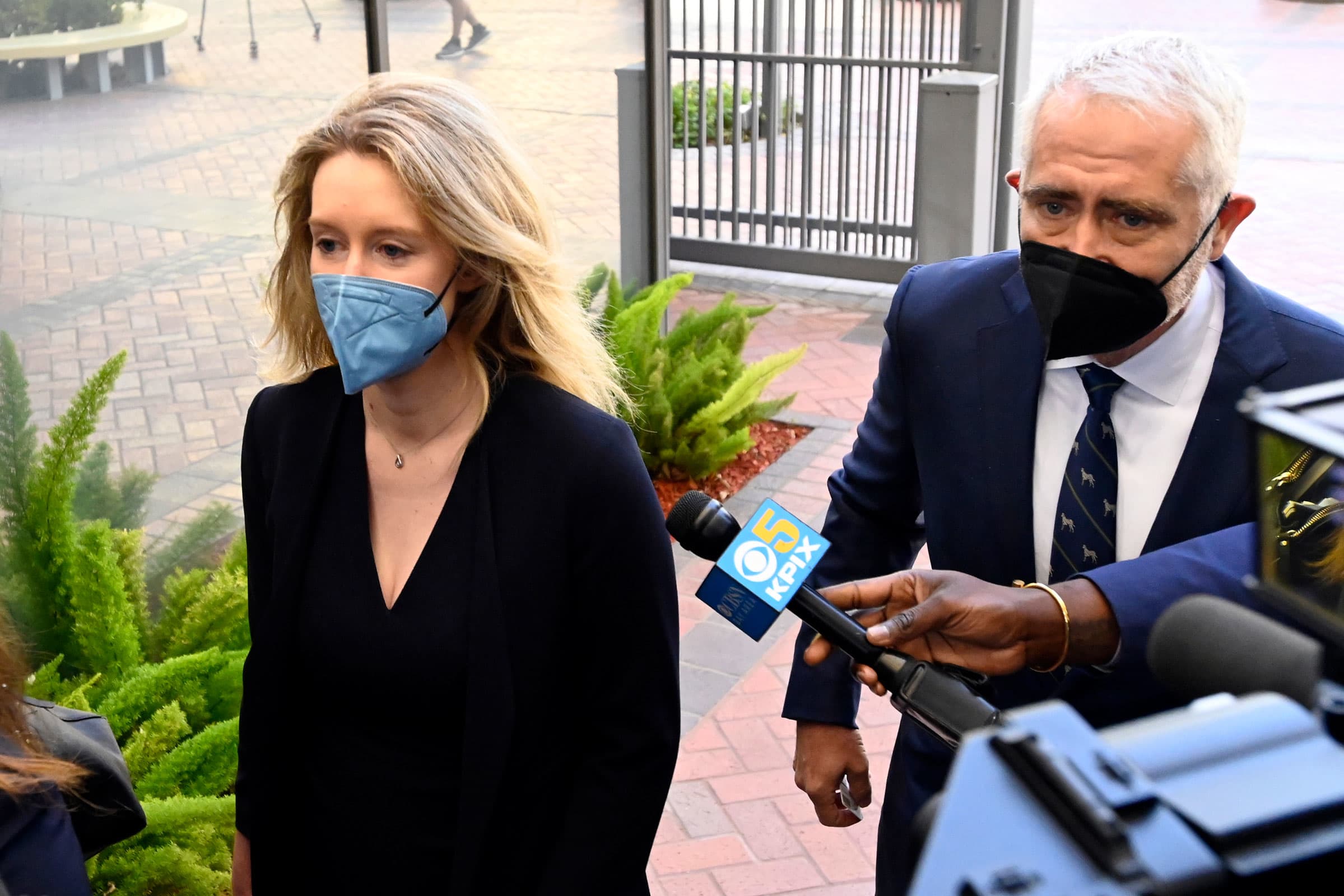SAN JOSE, Calif. — In public, Elizabeth Holmes was dubbed the next Steve Jobs on the cover of Inc. magazine in 2015, but in private the blood-testing company she founded, Theranos, was hemorrhaging hundreds of millions of dollars.
On Tuesday, the government’s first witness at Holmes’ fraud trial, longtime Theranos financial controller San Ho Spivey, who also goes by Danise Yam, testified in detail about the actual state of the company’s financial condition.
According to Yam, Theranos had net losses of $16.2 million in 2010, $27.2 million in 2011, $57 million in 2012 and $92 million in 2013. Yam testified the company made no revenue in 2012 and 2013, adding that the company was burning through $2 million per week in 2013 and “cash started to get a bit tight.”
Yam testified that by 2015 Theranos had accumulated losses of $585 million, according to tax documents. Despite that, prosecutors pointed to a document given to investors that forecasted revenue for 2014 as $140 million and revenue for 2015 as $990 million. Yam said she did not prepare this document.
“Did you ever provide financial projections to investors?” asked Robert Leach, an assistant U.S. attorney. “No,” replied Yam.
During cross-examination, defense attorneys pointed to a document in which Theranos was valued at either $9.5 billion or $1.69 billion depending on the methodology. Lance Wade, an attorney for Holmes, quizzed Spivey on other companies that suffered big losses during the 2009 financial crisis.
Yam testified that Holmes never sold a share she owned nor did she process any stock sale.
Holmes is facing a dozen counts of wire fraud and conspiracy to commit wire fraud in connection with misleading investors and patients about Theranos’ technology. She has pled not guilty. Her long-awaited criminal fraud trial kicked off last week in San Jose. In opening statements, Holmes’ defense team portrayed her as an ambitious young woman who truly wanted to revolutionize health care.
Holmes had told several investors that Theranos’ technology was deployed by the U.S. Department of Defense in the battlefield, in Afghanistan, and on medevac helicopters. During her four hours on the stand, Yam testified that Theranos actually did not have any revenue-generating contracts with the Defense Department or the military.
The government’s next witness, Erika Cheung, quit her job as a lab associate after seven months and became a whistleblower, giving a TED talk and being interviewed for numerous news stories.
Cheung testified that she was “star struck” by Holmes during her job interview.
“She had a charisma to her, she was very articulate,” Cheung said. “She had a strong sense of conviction to her mission.”
Cheung told the court that she was excited to work at Theranos based on “very little information” she was given. “I asked a bunch of questions about the company, and [Holmes] said you’ll find out when you start working here,” Cheung said.
Theranos was once valued at $9 billion.
“At the time she was one of the few female entrepreneurs to get the unicorn status,” Cheung recalled, adding that Holmes “could potentially set an example for other women to get excited about science and engineering.”
Cheung testified that her orientation was conducted by Holmes’ brother, Christian Holmes, who instructed her not to add Theranos to her Linkedin profile. Cheung said that while she was at Theranos the Edison, which was used for processing blood samples, only ran 12 tests and that all other tests were done on third-party machines.
“The Edison analyzer could only run one type of test for one patient at a given time,” Cheung said.
Holmes arrived at the federal courthouse holding hands with her mother, Noel Holmes. A spectator outside clapped in support and grew emotional as Holmes entered the courthouse, yelling, “Putting everything on one person is ridiculous.”
Earlier in the day the judge excused one juror for financial hardship, moving an alternate juror on to the main bench. It changed the jury makeup to eight men and four women.
